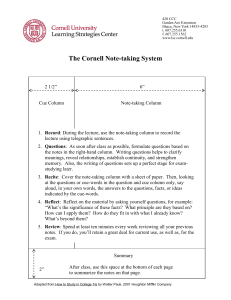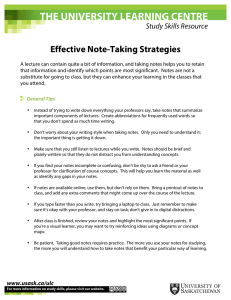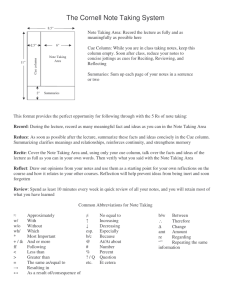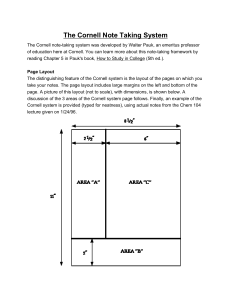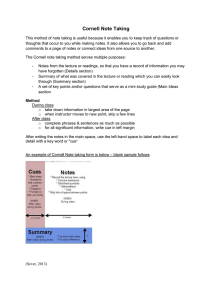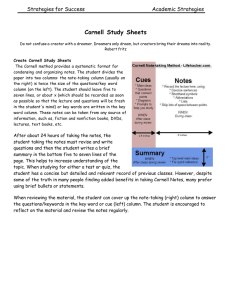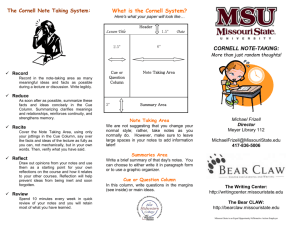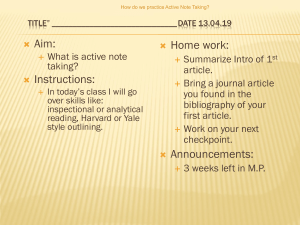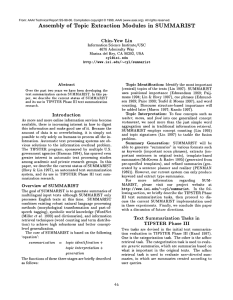ng
advertisement
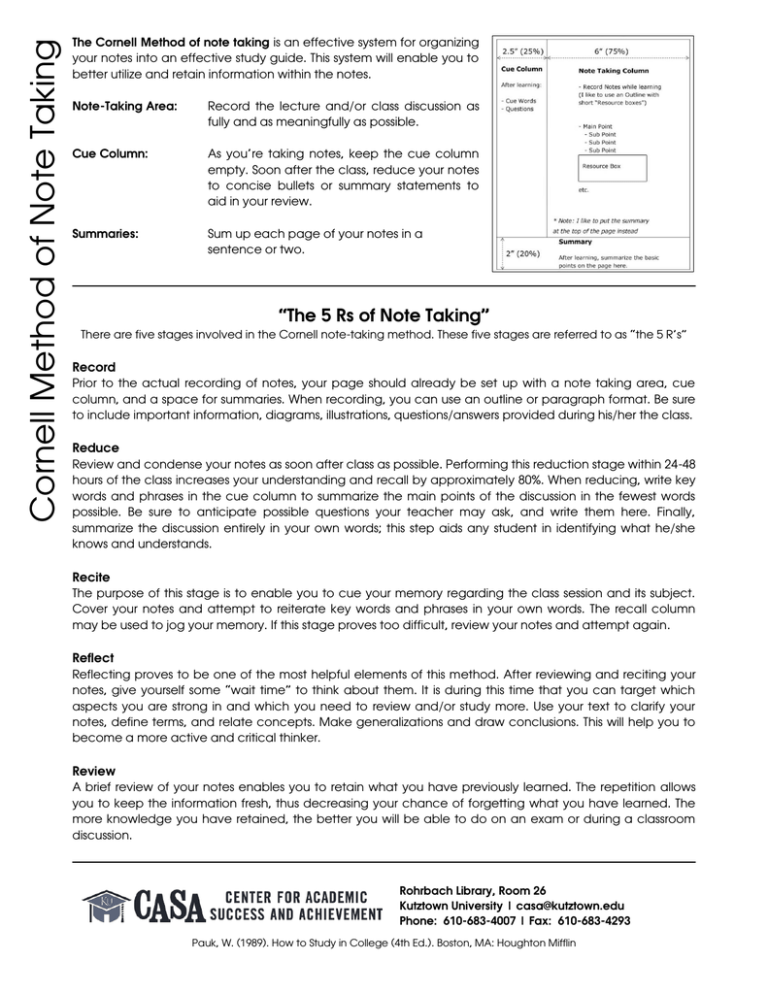
Cornell Method of Note Taking The Cornell Method of note taking is an effective system for organizing your notes into an effective study guide. This system will enable you to better utilize and retain information within the notes. Note-Taking Area: Record the lecture and/or class discussion as fully and as meaningfully as possible. Cue Column: As you’re taking notes, keep the cue column empty. Soon after the class, reduce your notes to concise bullets or summary statements to aid in your review. Summaries: Sum up each page of your notes in a sentence or two. “The 5 Rs of Note Taking” There are five stages involved in the Cornell note-taking method. These five stages are referred to as “the 5 R’s” Record Prior to the actual recording of notes, your page should already be set up with a note taking area, cue column, and a space for summaries. When recording, you can use an outline or paragraph format. Be sure to include important information, diagrams, illustrations, questions/answers provided during his/her the class. Reduce Review and condense your notes as soon after class as possible. Performing this reduction stage within 24-48 hours of the class increases your understanding and recall by approximately 80%. When reducing, write key words and phrases in the cue column to summarize the main points of the discussion in the fewest words possible. Be sure to anticipate possible questions your teacher may ask, and write them here. Finally, summarize the discussion entirely in your own words; this step aids any student in identifying what he/she knows and understands. Recite The purpose of this stage is to enable you to cue your memory regarding the class session and its subject. Cover your notes and attempt to reiterate key words and phrases in your own words. The recall column may be used to jog your memory. If this stage proves too difficult, review your notes and attempt again. Reflect Reflecting proves to be one of the most helpful elements of this method. After reviewing and reciting your notes, give yourself some “wait time” to think about them. It is during this time that you can target which aspects you are strong in and which you need to review and/or study more. Use your text to clarify your notes, define terms, and relate concepts. Make generalizations and draw conclusions. This will help you to become a more active and critical thinker. Review A brief review of your notes enables you to retain what you have previously learned. The repetition allows you to keep the information fresh, thus decreasing your chance of forgetting what you have learned. The more knowledge you have retained, the better you will be able to do on an exam or during a classroom discussion. Rohrbach Library, Room 26 Kutztown University | casa@kutztown.edu Phone: 610-683-4007 | Fax: 610-683-4293 Pauk, W. (1989). How to Study in College (4th Ed.). Boston, MA: Houghton Mifflin
